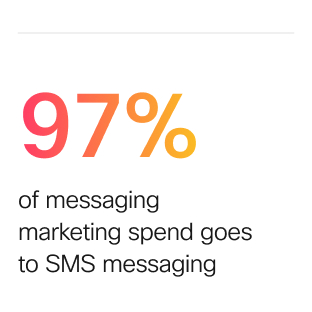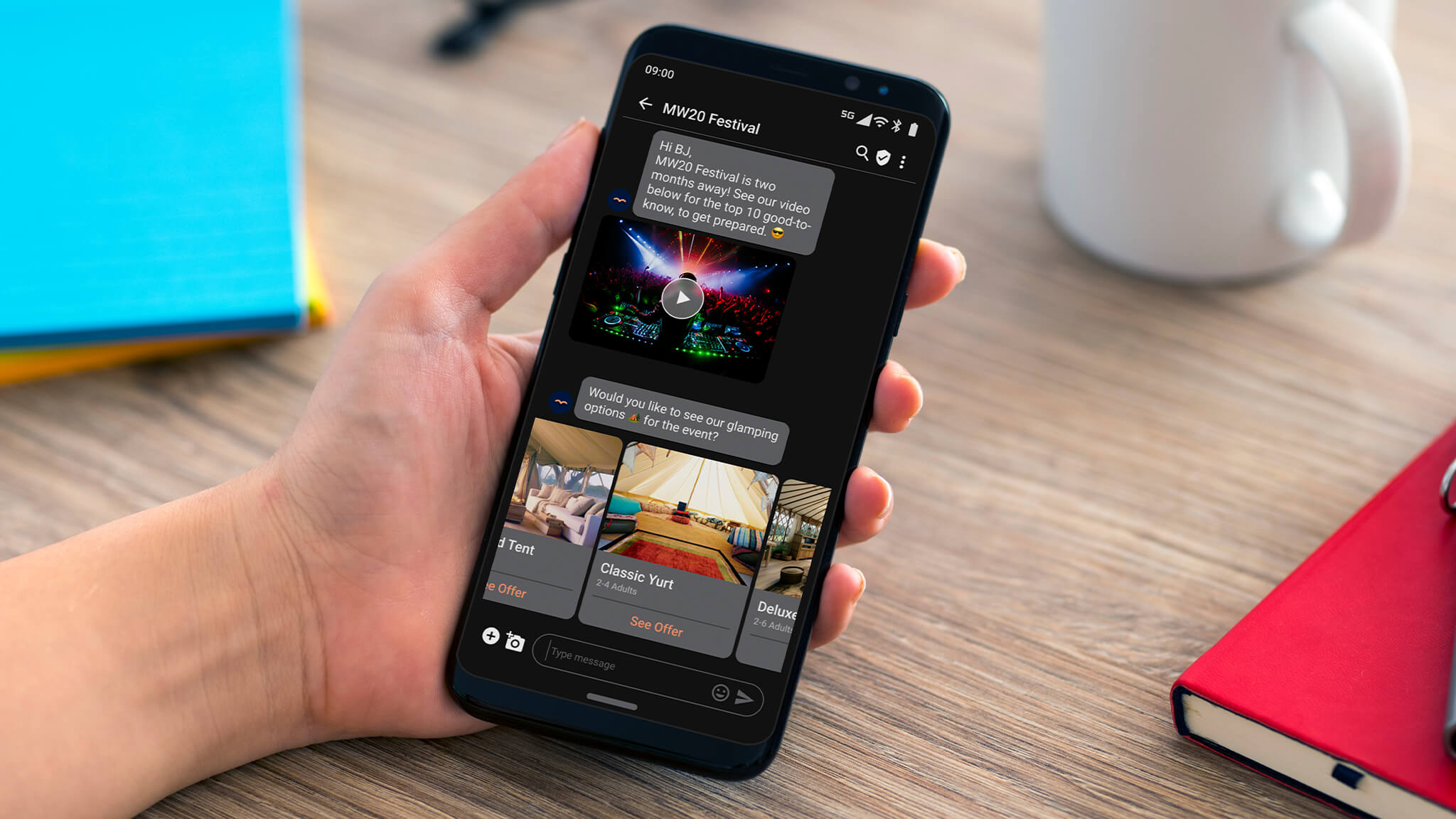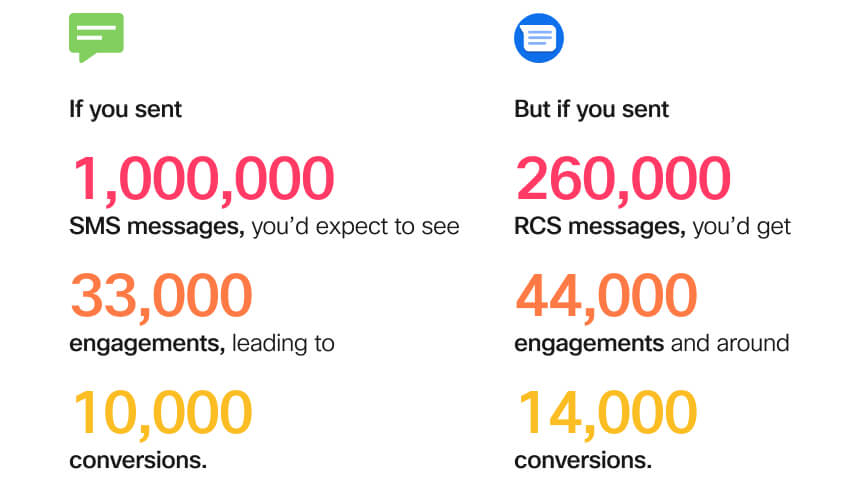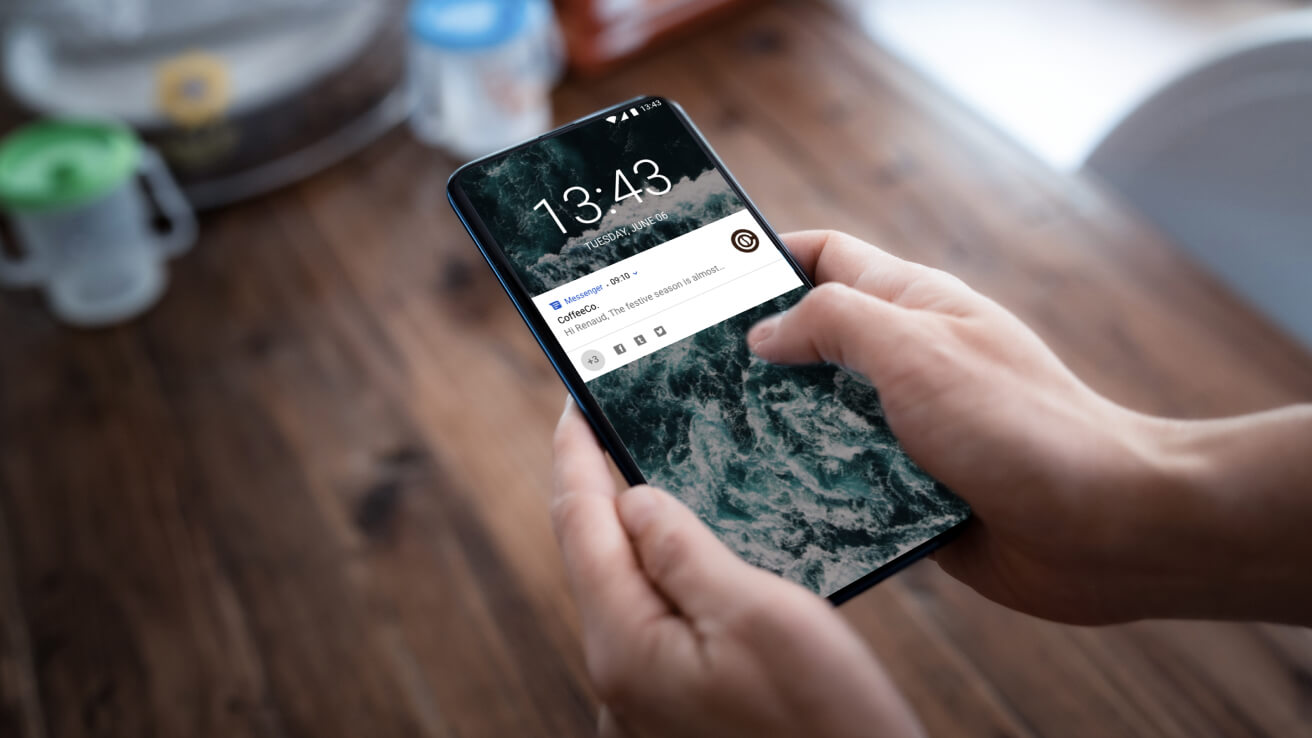From SMS to RCS: Navigating the unique impact of messaging channels.
Learn what the experts at Mobilesquared have to say about the unique impact of mobile messaging channels for marketing—and discover what the future may hold.

Contents
When you spend time and money on your marketing campaigns, it’s important to make sure your message reaches its audience. That’s why making the right decisions about the channels you use to communicate with your customers and prospects is vital. But how do you know which decisions are the right ones?
At a recent event, Nick Lane, Chief Messaging Officer and Founder of Mobilesquared, shared his insight into why mobile messaging channels offer a unique advantage in this space.
Mobilesquared is the world’s leading provider of messaging intelligence, so there are few people better placed than Nick to share his thoughts on the past, present, and future of marketing messaging. Here are three key takeaways from his talk.
Get all the messaging research highlights in this handy infographic.
Welcome to The Messageverse—where reach is extraordinary
One of the biggest benefits of using mobile messaging in your marketing campaigns is its enormous reach. The UK population currently stands at around 69 million people. Of this number, there are 60 million unique mobile users and 52.7 million smartphone users. In an age where everyone is tethered to their phones, messaging presents a huge opportunity to reach the nation.

What complicates things slightly, is that users all have preferred methods of messaging through a variety of applications, from WhatsApp to Facebook Messenger. This ecosystem of applications is what Mobilesquared refers to as The Messageverse.
Among these channels, however, there is one that can be guaranteed to reach every mobile device owner. Every smartphone in the world is capable of receiving SMS messages, which means a simple text can grant you direct access to 60 million UK citizens.
And it gets better. Mobilesquared’s research in 2022 revealed that:
55% of all SMS messages are read
100% of SMS messages are seen through notification windows or message previews.
This makes SMS marketing one of the most powerful tools available.
In the UK there are 60 million unique mobile users and 52.7 million smartphone users.
That’s not to say that other channels in The Messageverse don’t also have a considerable reach. WhatsApp has around 49 million users, iMessage and Facebook Messenger have close to 30 million, and RCS (Rich Communication Services) is beginning to gain popularity too, with around 22.5 million users.
Understanding this market, who you can reach, and how, can provide vital insights into the kinds of engagement models you should pursue with your marketing.
New to SMS or need a bit of refresh on how to use this channel? These two guides below are a good place to start.
The long and winding road…
Mobile messaging is nothing new, but it is a form of communication that has evolved significantly over the years, and we’re currently only part way on that journey.
The format began with the SMS text message back in 1992, which quickly evolved a few years later into MMS or multimedia messaging, where pictures could be added to messages.
Right now, we’re at the point where these basic forms of messaging have progressed to live conversations. The next step on the journey is to enrich those conversations further.
The ultimate goal is to reach the point of fully-conversational commerce—a dynamic where customers can make shopping decisions, purchases, and transactions through messaging apps alone, leading to more convenient, simple, and intuitive experiences. But getting there will require organizations to invest in the latest channels and capabilities. Which begs the question, where is money currently spent in this area?

Currently, 97% of messaging marketing spend is accounted for by SMS messaging.
And of the 3.5 million businesses that use various marketing channels in the UK, only around half a million use messaging at all. This could be a huge, missed opportunity if you remember that the potential exists to reach roughly 60 million people.
Ultimately though, what this means is that there is still huge potential for this market to grow.
Is RCS the future of messaging?
RCS (Rich Communication Services) also known as RCS chat, is a form of messaging expected to have a significant presence in the coming years. It allows users to send high-quality snippets and attachments within messages to augment conversations and encourage further engagement.

However, if simple SMS messaging is only used by roughly half a million UK businesses, you could be forgiven for thinking that we’re a while away from RCS having any major role in engagements. And you may wonder what the benefits of using it could be.
On average, customers engage more with RCS messages.

The fact is, the RCS userbase isn’t as small as many people believe, so there is significant scope for engagement. And the engagement it enables is more powerful than simple SMS interactions. There are currently around 22.6 million RCS users in the UK—roughly the equivalent of the combined audience for the top four TV shows in the country. It also dwarfs other advertising channels such as radio, print, and popular social media networks, which are all likely to reach less than a million users. So, the audience—and the opportunity—is certainly there.
The benefits of RCS extend beyond just reach though. The metrics it provides allow you to segment your audience and ultimately target those most likely to interact with your brand. This means marketing spend can be reduced while results improve.
The future of messaging is bright
The potential for messaging to reach and engage huge numbers of people can’t be overlooked. And for marketers, it’s an opportunity that shouldn’t be missed. However, engagement with these channels does vary across industries.
The average opt-in for mobile messaging across all industries is around:

In some fields the number of users that opt-in is significantly greater. Retail and ecommerce organizations see just short of 30 million users opt in. Finance companies can target around 18 million, while utilities and healthcare companies have access to 15 million.
For companies in these sectors, investment in messaging could quickly make a measurable difference to engagement. But this is also true across the board. As we continue our journey across The Messageverse, and messages evolve to provide more detailed and convenient interactions, the benefits of pursuing marketing through these channels are only set to increase.



